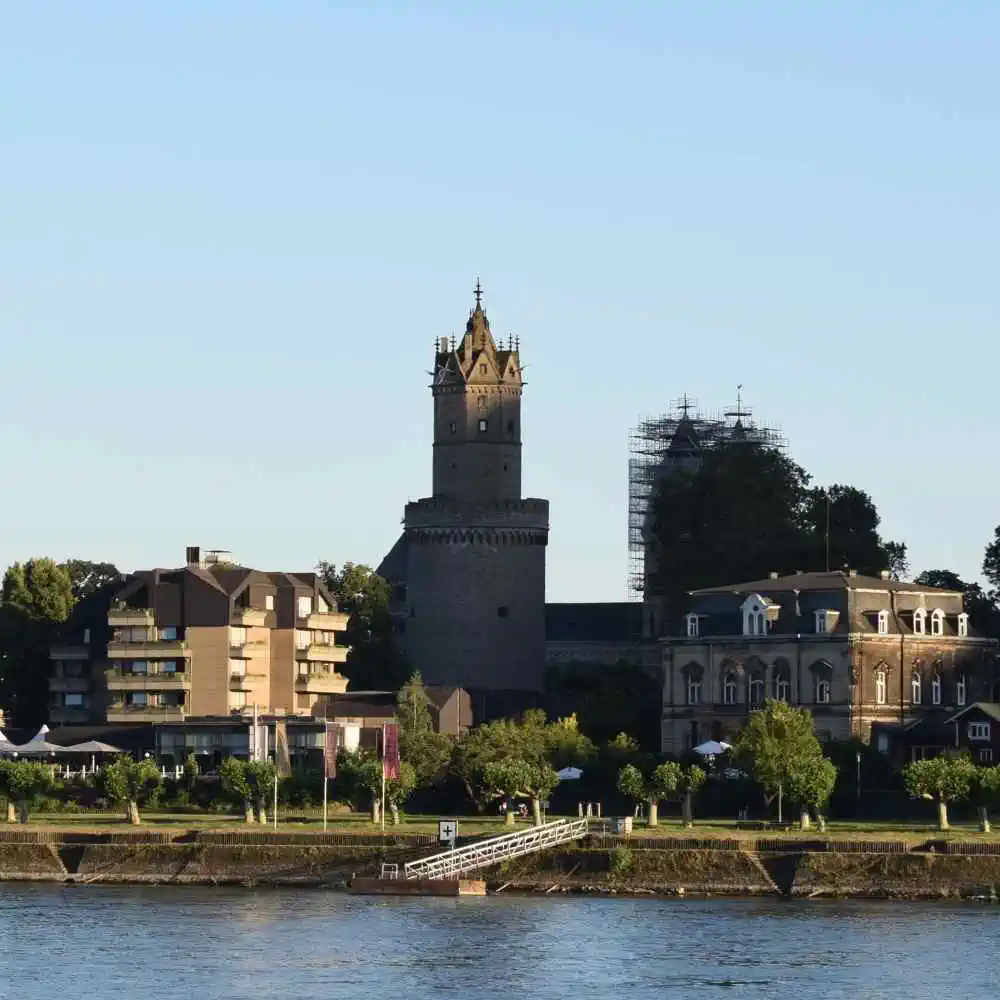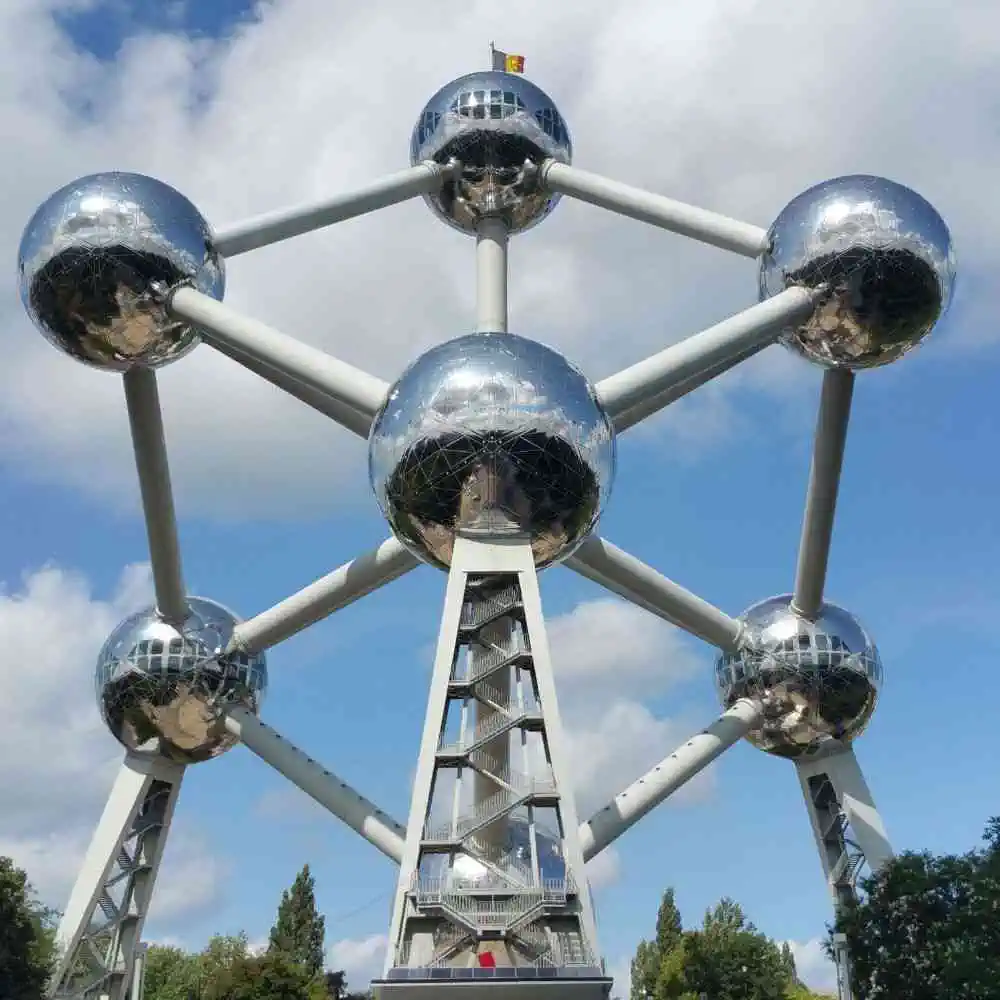Wyruszysz z Bruxelles-Central, położonego w samym centrum miasta Bruksela, i będziesz cieszyć się pięknymi widokami podczas podróży, aż dojdziesz do Andernach, które również znajduje się w sercu Andernach.
Pociągi z Bruksela do Andernachod € 40.00
Pociągi z Bruksela do Andernach
Podróżowanie pociągiem: Bruksela - Andernach
Taking a train from Brussels to Andernach is a convenient and fast way to travel between the two cities. The journey from Brussels-Central Station to Andernach Central Station will take around five hours, making it the shortest route. Other trains that travel from Brussels to Andernach pass through some of the most important cities in the region, such as Cologne, Koblenz, and Bonn, which have a lot to offer in terms of sightseeing and tourist attractions.
The total distance between Brussels and Andernach is around 341 kilometers, passing through two countries: Belgium and Germany. On the way, travelers will be able to take in the beautiful views of rolling hills, charming villages, and medieval castles. One of the most iconic sights you'll find during your journey is the UNESCO-listed Rhine Valley, where you can spot fairy-tale castles, ancient fortifications, and impressive hillside vineyards.
The journey to Andernach is a great opportunity to explore the cultural heritage of the region. From Brussels, you'll first make a stop at Liège Guillemins station, where you can check out its stunning modern architecture. In Cologne, travelers can marvel at its majestic cathedral and explore the charming old town with its colorful markets and lush cafés. Koblenz also makes a great stop, offering a historic old town, a picturesque riverside promenade, and a lively shopping street.
When you finally arrive in Andernach, be sure to check out the old town's cobblestone streets and its historic castle ruins. You'll also find some of the city's most important landmarks, such as the Niederwald Monument, the Andernach Labyrinth, and the Wildpark Andernach wildlife park. All in all, the journey from Brussels to Andernach is an adventure worth taking, full of scenic views and interesting sights.

Szczegóły podróży
How long does the train from Brussels to Andernach take?
The journey from Brussels to Andernach by train typically takes around 4 to 6 hours, depending on the route and the number of changes required.
What is the fastest journey from Brussels to Andernach by train?
The fastest train journey from Brussels to Andernach can be around 4 hours when optimal connections are chosen and transfer times are minimal.
How much does the train cost from Brussels to Andernach?
The cost of a train ticket from Brussels to Andernach can vary widely, generally ranging from €40 to €120, influenced by factors like booking time, class, and flexibility.
How much does the Brussels to Andernach?
No, there are no direct train services from Brussels to Andernach. At least one change is usually required during the journey.
What is the distance from Brussels to Andernach by train?
The distance from Brussels to Andernach by train is approximately 250 Km.
Which are the cities that the train stops from Brussels to Andernach?
The train from Brussels to Andernach typically stops in Cologne and Koblenz. These key cities serve as major transfer points to reach Andernach.
Kup bilety na pociąg: Bruksela - Andernach
Podróżowanie pociągiem: Bruksela - Andernach, to łatwa i komfortowa podróż. RailClick to najlepszy sposób na podróżowanie po Europie pociągiem.
Bruksela: Miejsca do zobaczenia
Odkryj serce Europy w Brussels, mieście, gdzie historia splata się z nowoczesnością, a każdy zakątek kryje niezliczone opowieści. Czy jesteś gotów odkryć, co sprawia, że stolica Belgii jest tak niezwykła? Przygotuj się na podróż, która zabrać Cię może dalej, niż przypuszczasz.
Grand Place
Uważany za jedno z najpiękniejszych miejsc na świecie, Grand Place zachwyca złocistymi fasadami i bogatym ornamentem. Centrum handlowe i kulturalne od XVII wieku jest sercem Brussels. Lokalizacja: centrum miasta. Godziny otwarcia: dostępne całą dobę. Wstęp: bezpłatny. Wskazówka: odwiedź wieczorem, kiedy oświetlenie uwydatnia jego magię.
Atomium
Ikoną Brussels jest Atomium, futurystyczna struktura powstała na wystawę światową w 1958 roku. Reprezentuje atom żelaza powiększony 165 miliardów razy. Lokalizacja: Square de l'Atomium. Godziny otwarcia: 10:00-18:00. Opłata za wstęp: €15. Wskazówka: platforma widokowa oferuje spektakularne widoki na miasto.
Pałac Królewski
Pałac Królewski jest oficjalną rezydencją monarchy belgijskiego, choć faktycznie mieszka on poza miastem. Budynek zachwyca elegancją i przepychem wnętrz. Lokalizacja: Place des Palais. Godziny otwarcia: lipiec-sierpień, 10:30-17:00. Wstęp: bezpłatny. Wskazówka: nie przegap zmiany warty.
Katedra św. Michała i św. Guduli
Perełka gotyku, Katedra św. Michała i św. Guduli, jest świadkiem ważnych wydarzeń narodowych. Lokalizacja: Parvis Sainte-Gudule. Godziny otwarcia: 7:00-18:00. Wstęp: bezpłatny. Wskazówka: zwróć uwagę na witraże przedstawiające historię miasta.
Manneken Pis
Choć mały, Manneken Pis jest jednym z najbardziej rozpoznawalnych symboli Brussels. Statua chłopca oddającego mocz była częścią systemu wodociągowego od XVII wieku. Lokalizacja: rue de l'Étuve. Godziny otwarcia: dostępny całą dobę. Wstęp: bezpłatny. Wskazówka: poszukaj jego bogatej kolekcji kostiumów.
Place Royale (Koningsplein)
Place Royale to kwintesencja neoklasycznego placu, otoczonego ważnymi budynkami kulturalnymi i historycznymi. Lokalizacja: centrum miasta. Godziny otwarcia: dostępne całą dobę. Wstęp: bezpłatny. Wskazówka: idealne miejsce do rozpoczęcia wycieczki po historycznych miejscach Brussels.
Parlament Europejski
Zanurz się w sercu europejskiej demokracji odwiedzając Parlament Europejski. Dostępne są zarówno samodzielne, jak i przewodnikowane wycieczki. Lokalizacja: Rue Wiertz. Godziny otwarcia: 9:00-18:00 (pon-pt). Wstęp: bezpłatny. Wskazówka: zarezerwuj wizytę online, aby uniknąć kolejek.
Podróżując po Brussels, zanurzysz się w bogactwie kultury, historii i architektury. Nie zapomnij skosztować lokalnych przysmaków, takich jak belgijskie frytki, czekolada, czy wafle. Każdy znajdzie coś dla siebie, czy to na zabytkowych uliczkach, czy w sercu europejskiej polityki. Brussels oczaruje Cię swoją rozmaitością i przyjazną atmosferą, sprawiając, że będziesz chciał wracać tutaj znów i znów.

Andernach: Miejsca do zobaczenia
Andernach, in Germany is an ideal destination for those looking to explore the city’s numerous historical and architectural sites. A charming city in the Rhineland-Palatinate, Andernach is filled with ample opportunities to discover the city’s culture, history, and cuisine. To maximize your visit to Andernach, here is a list of must-visit sites and delicious places to eat.
Historic Town Hall: One of the most iconic sites in Andernach, the Historic Town Hall is a must-visit. Constructed in the late 1600s, the impressive building with its distinctive spire has been a landmark in the city. Admission is free, and the Town Hall offers guided tours to get an insight into its intricate architecture. The tours are available on Saturdays from April to October, and are a great way to get a better understanding of the city’s history.
Andernach Castle: Built in the 13th century, Andernach Castle is a beautiful medieval site that overlooks the Rhine valley. Located at the highest point of the city, the castle is an excellent spot to take in the stunning views of the city. The castle is open from April to November for a nominal fee, and it is certainly worth a visit to see the grandeur of the castle.
Riedhöhle Caves: Once home to a Neolithic settlement, Riedhöhle Caves is a fascinating place to explore. Discovered in the late 1800s, the caves provided insight into the lives of ancient people who occupied the area. A guided tour of the caves is recommended to get a better understanding of the history of the cave and its inhabitants. The caves are open every day, and entrance fees are low.
Garden of Awakening: Located in a former monastic garden, the Garden of Awakening is an oasis of beauty. This tranquil garden consists of several paths lined with flowerbeds, ponds, and small waterfalls. Visitors to the garden can also explore the ruins of the monastery, and visit the nearby Andernach Abbey. The Garden of Awakening is free to visit and open year-round.
Luxembourg Palace: A masterpiece of Baroque architecture, Luxembourg Palace is a must-see for those who appreciate art and history. Dating back to the 18th century, the palace is a stunning example of the classic style of the era. The palace is open daily, and entrance fees are low. Insider tip: on certain days, visitors can explore the palace’s extensive art collection.
Must-Try Cuisine: No trip to Andernach is complete without trying out the local cuisine. Be sure to sample some of the city’s traditional dishes like sauerkraut, meatloaf, and roast pork. Most restaurants offer traditional German cuisine with a modern twist. For a truly unique experience, try the famous Andernach Alt beer, the city’s signature brew.
River Walk: A visit to Andernach is not complete until you take a stroll along the river. A popular spot with locals and tourists, the River Walk is a great way to get to know the city. There are plenty of restaurants, cafes, and shops to explore along the river. This is the perfect place to soak in the city’s beauty and local culture.
Whether you are looking to explore its historic sites or sample its delicious cuisine, Andernach is a great destination for an ideal vacation. With its abundance of attractions and beautiful views, Andernach is sure to charm and delight all who visit this picturesque city.

Bruksela: Główne stacje kolejowe
W sercu Belgii, tętniące życiem miasto Brusela pełni rolę kluczowego węzła w europejskiej sieci kolejowej, przy czym stacja Brusela-Południe (Bruxelles-Midi/Brussel-Zuid) stanowi główne wejście. Ten centralny punkt łączy podróżnych z kierunkami krajowymi i międzynarodowymi, a także otoczony jest przez inne znaczące stacje takie jak Brusela-Centralna i Brusela-Północ, zwiększając dostępność miasta. Strategiczne umiejscowienie tych stacji podkreśla rolę Bruseli w ułatwianiu bezproblemowych podróży przez Europę.
Stacja Brusela-Południe, znajdująca się przy alei Fonsny, działa przez całą dobę, co czyni ją kluczowym punktem dla wczesnych wyjazdów i późnych przyjazdów. Jej godziny pracy dostosowane są do szerokiego zakresu planów podróży, zapewniając, że pomoc jest zawsze dostępna. Dla tych, którzy podróżują z dodatkowym bagażem, usługi przechowywania bagażu oferują wygodne rozwiązanie, pozwalając podróżnym zwiedzać miasto bez obciążeń. Kompleksowe udogodnienia na tej stacji są zaprojektowane, aby zaspokoić potrzeby każdego podróżnego, zapewniając płynną tranzycję przez Bruselę.
- Bruxelles-Central
- Bruksela-Midi
- Brussels-Airport-Zaventem
- Bruksela-Luxembourg
- Bruksela-Nord
- Bruksela-Schuman
- Bruksela-Chapelle
- Bruksela-Congrès
- Bruksela-Ouest
Andernach: Główne stacje kolejowe
Andernach, located in Germany, is home to one main train station, Andernach Hauptbahnhof. From here, visitors are able to get to many attractions in the area, and there are also other smaller stations in the city, such as Bundesbahnstation Andernach.
Andernach Hauptbahnhof is located on Bahnhofstraße 16 and is open every day from 5am to midnight. There is a contact telephone number available for the station, which is +49 (0) 2266 98874. There is also luggage storage available, as well as station amenities such as currency exchange and restrooms.
- Andernach
Bruksela - Andernach: Jak uzyskać najlepsze oferty
Rezerwuj z wyprzedzeniem:
Tak jak w przypadku cen biletów lotniczych, ceny biletów kolejowych mają tendencję do wzrostu, gdy data odjazdu zbliża się. Rezerwacja tygodni lub nawet miesięcy z wyprzedzeniem może przynieść znaczne oszczędności.
Podróżuj poza godzinami szczytu:
Unikaj podróżowania w godzinach szczytu, takich jak poranki i wieczory w dni robocze. Wybierz południe, późny wieczór lub środek tygodnia, gdy popyt jest mniejszy.
Rozważ wolniejsze pociągi lub trasy pośrednie:
Pociągi ekspresowe lub szybkie mogą zaoszczędzić czas, ale często są droższe. Wybór regionalnych lub wolniejszych usług może zmniejszyć koszt biletu.
Szukaj specjalnych ofert i promocji:
Przewoźnicy kolejowi od czasu do czasu oferują promocje lub specjalne okazje, szczególnie poza sezonem szczytowym. Warto zapisać się na newslettery. Ponadto czasami dostępne są zniżki dla grup lub na bilety powrotne, więc rozważ te opcje, jeśli pasują do Twoich planów podróży.
- Skontaktuj się z Nami


